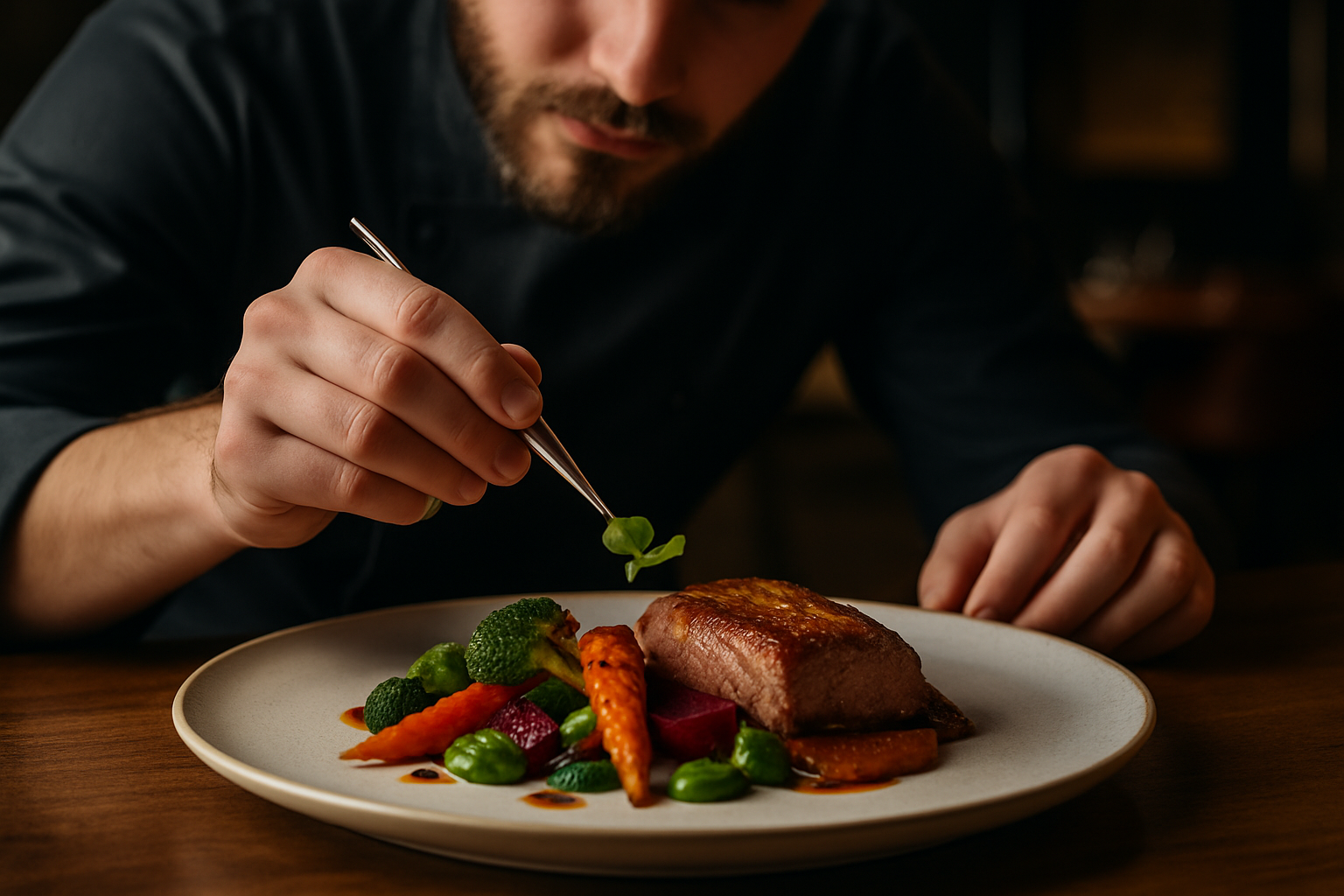Culinary Alchemy: Transforming Humble Ingredients into Gourmet Delights
Discover the art of elevating everyday ingredients into extraordinary dishes. This culinary journey explores innovative techniques and unexpected flavor combinations that turn simple staples into gourmet masterpieces. From reimagined comfort foods to luxurious twists on classic recipes, learn how to unlock the hidden potential in your pantry and create restaurant-worthy meals at home.

Elevating Staples through Technique
The transformation of humble ingredients into gourmet delights often hinges on the application of advanced cooking techniques. By mastering methods like sous vide, fermentation, or molecular gastronomy, home cooks can achieve restaurant-quality results with everyday items. For instance, a simple potato can be transformed into a silky, luxurious puree through precise temperature control and the addition of butter and cream. Vegetables like carrots or beets can be elevated through slow-roasting, which concentrates their natural sugars and develops complex caramelized flavors. Even a basic ingredient like an egg can become a showstopper when perfectly poached or transformed into a delicate, savory custard. The key to success lies in understanding the science behind these techniques and how they affect the texture, flavor, and appearance of ingredients. By investing time in learning and practicing these methods, home cooks can unlock new possibilities in their kitchens and create dishes that rival those found in high-end restaurants.
The Art of Presentation and Plating
While flavor is paramount, the visual appeal of a dish plays a crucial role in elevating it from ordinary to extraordinary. The art of plating transforms even the simplest ingredients into visually stunning creations that engage all the senses. Start by considering the color palette of your ingredients and how they can be arranged to create contrast and visual interest. Utilize negative space on the plate to draw attention to key elements of the dish. Experiment with different textures and heights to add dimension and create a more dynamic presentation. For example, a humble bowl of soup can be elevated with carefully placed garnishes, a drizzle of infused oil, or a dusting of complementary spices. Even comfort foods like mashed potatoes can be transformed through piping techniques or by serving them in unexpected vessels. Remember that the goal is not just to make the food look pretty, but to enhance the overall dining experience by creating anticipation and excitement before the first bite is even taken.
Reimagining Comfort Foods
Comfort foods hold a special place in our hearts, but they can often be reimagined to create gourmet experiences that honor tradition while pushing culinary boundaries. The key is to maintain the essence of the dish while elevating it through high-quality ingredients, refined techniques, or unexpected twists. For example, a classic macaroni and cheese can be transformed by using artisanal cheeses, adding truffle oil, or incorporating unexpected ingredients like roasted butternut squash or caramelized onions. A simple grilled cheese sandwich can become a gourmet delight when made with artisanal bread, a blend of premium cheeses, and unexpected additions like fig jam or prosciutto. Even a humble bowl of oatmeal can be elevated to brunch-worthy status by cooking it risotto-style and topping it with savory ingredients like roasted mushrooms, poached eggs, and aged Parmesan. The goal is to create dishes that are both comforting and exciting, offering a new perspective on familiar flavors.
Sustainable Gourmet: Making the Most of Every Ingredient
In the pursuit of culinary excellence, it’s essential to consider sustainability and minimize waste. This approach not only benefits the environment but also challenges cooks to be more creative and resourceful with their ingredients. Start by embracing the “nose-to-tail” or “root-to-stem” philosophy, using every part of an ingredient to its fullest potential. Vegetable scraps can be transformed into flavorful stocks or fermented into pickles. Stale bread can become gourmet croutons or the base for a rustic panzanella salad. Even typically discarded items like citrus peels can be candied or used to infuse oils and vinegars. By viewing ingredients through this lens, home cooks can discover new flavors and textures while reducing food waste. Additionally, focusing on seasonal, locally-sourced ingredients not only supports sustainability but also ensures peak flavor and freshness, allowing the true essence of each ingredient to shine in gourmet creations.
Culinary Alchemy: Tips and Tricks
-
Experiment with contrasting flavors and textures to create more complex dishes
-
Master basic culinary techniques like braising, emulsification, and reduction
-
Invest in quality kitchen tools that enhance precision and consistency
-
Learn to balance flavors using the five basic tastes: sweet, salty, sour, bitter, and umami
-
Embrace imperfection and learn from culinary mishaps
-
Develop your palate by tasting ingredients at different stages of cooking
-
Keep a culinary journal to document successful experiments and ideas for future dishes
-
Explore international cuisines for inspiration and new flavor combinations
-
Practice mindful cooking, focusing on the sensory experience of preparation and consumption
-
Don’t be afraid to break culinary rules – some of the best discoveries come from unconventional thinking
In conclusion, culinary alchemy is about more than just cooking; it’s a mindset that encourages creativity, experimentation, and a deep appreciation for ingredients. By mastering techniques, understanding flavor profiles, and approaching familiar ingredients with fresh eyes, home cooks can transform everyday meals into extraordinary culinary experiences. Remember that the journey of culinary exploration is ongoing, and each dish is an opportunity to learn, create, and delight in the magic of food transformation.





